| View previous topic :: View next topic |
| Author |
Message |
Ru Smith
Joined: 13 Oct 2012
Posts: 362



|
 Posted: Oct 19, 2012 18:49 Post subject: Mica Twins Posted: Oct 19, 2012 18:49 Post subject: Mica Twins |
|
|
If the muscovite twins shown below from Brazil and Pakistan are twinned on [310], what about the phlogopite twins from New York? Are they twinned on [110]?
Out of curiosity I read the a and b unit cell lengths from mindat (5.3 and 9.19 Angstroms) and calculated the angle between an a axis and [110] as ATAN(9.19/5.3) and was surprised and delighted at the answer of 60.03 degrees. What do you think?
| Description: |
Muscovite
Minas Gerais, Brazil
5 cm specimen, 13 mm twins |
|
| Viewed: |
31465 Time(s) |
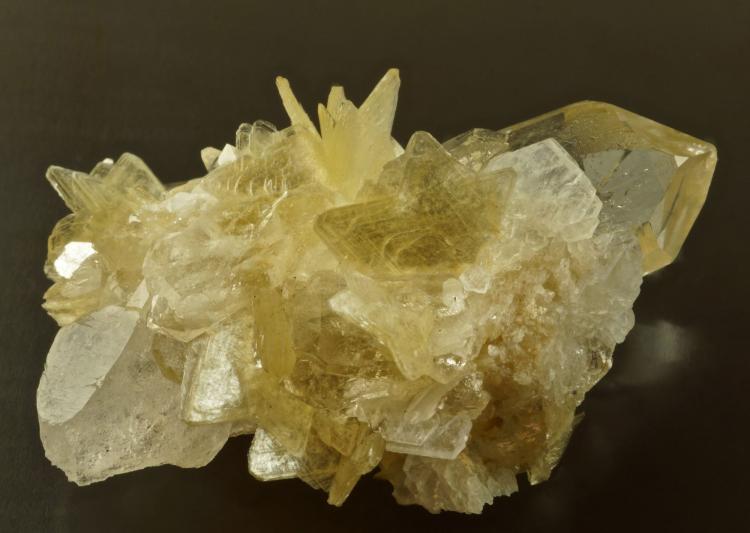
|
| Description: |
Muscovite
Minas Gerais, Brazil
5 cm specimen, 13 mm twins |
|
| Viewed: |
31541 Time(s) |
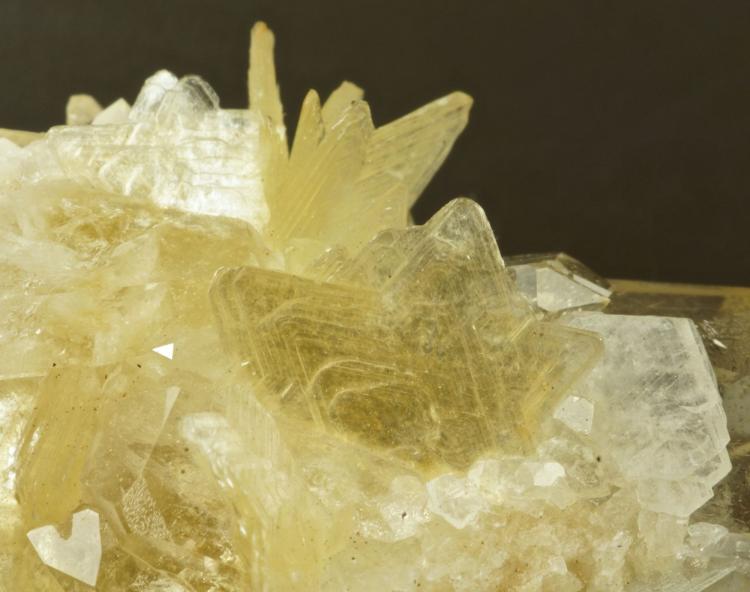
|
| Description: |
Muscovite on albite
Shigar Valley, Pakistan
5 cm specimen, 3 cm twin |
|
| Viewed: |
31554 Time(s) |
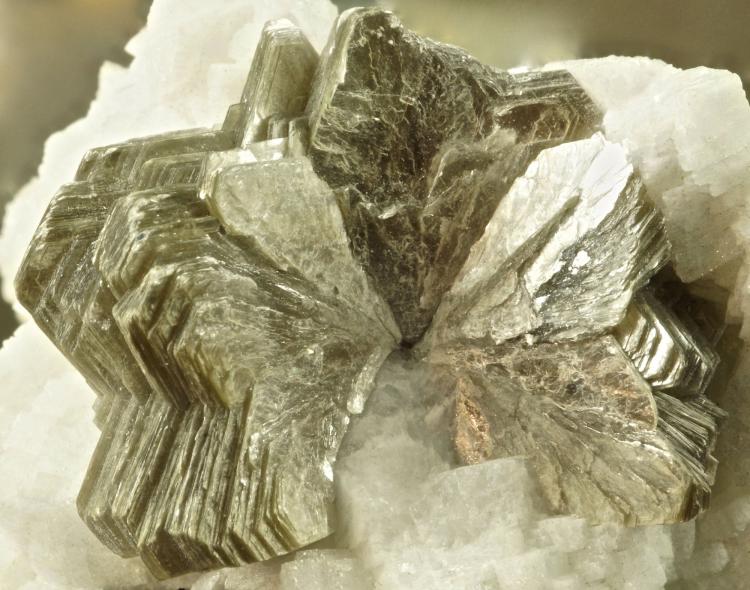
|
| Description: |
Muscovite on albite
Shigar Valley, Pakistan
5 cm specimen, 3 cm twin |
|
| Viewed: |
31567 Time(s) |
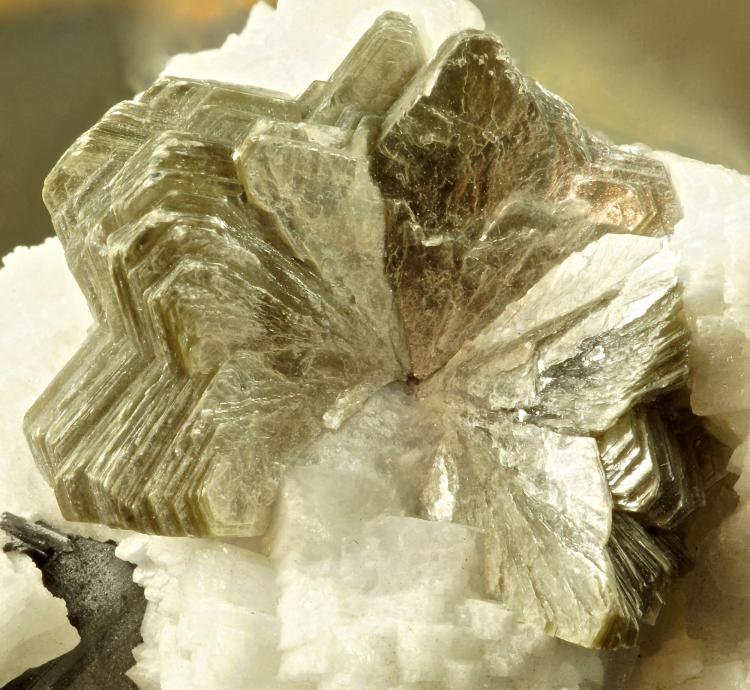
|
| Description: |
Phlogopite
Selleck Road, Pierrepont, New York, USA.
2 cm |
|
| Viewed: |
31467 Time(s) |
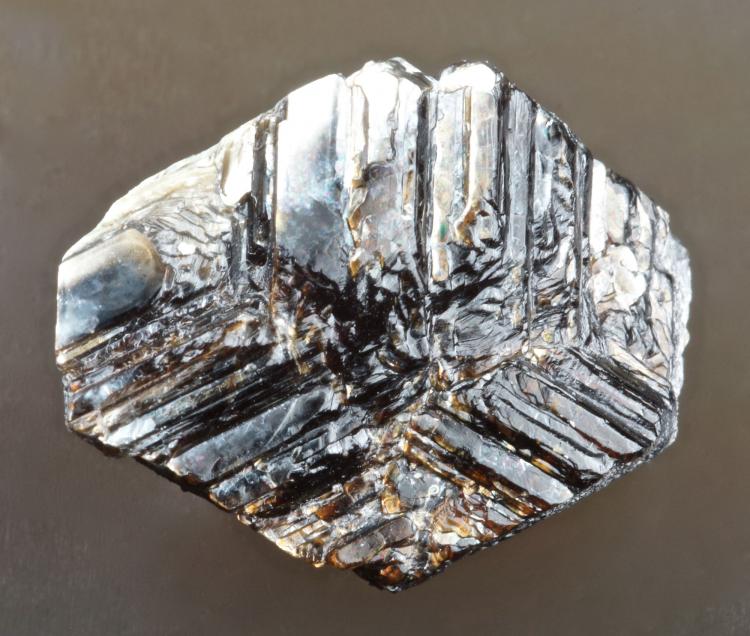
|
| Description: |
Phlogopite
Selleck Road, Pierrepont, New York, USA.
2 cm |
|
| Viewed: |
31562 Time(s) |
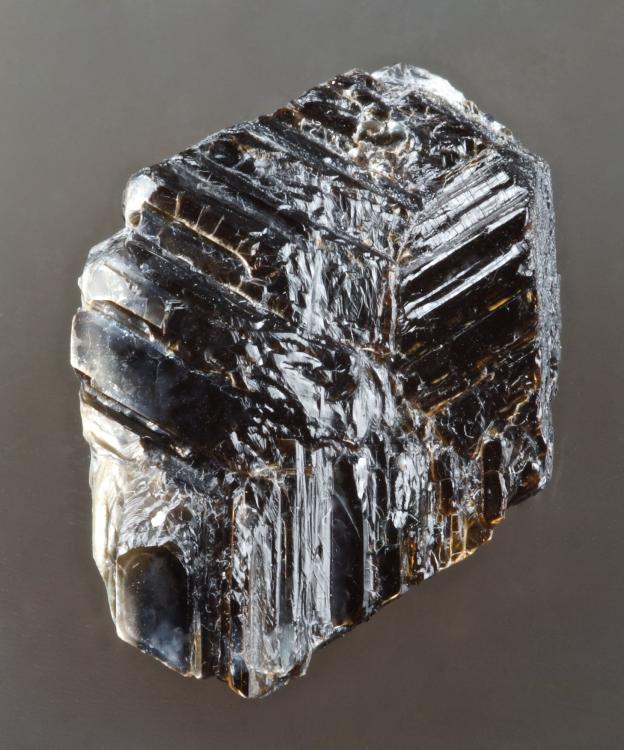
|
|
|
| Back to top |
|
 |
Luiz Menezes
Joined: 10 Dec 2009
Posts: 140
Location: Belo Horizonte


|
 Posted: Oct 20, 2012 13:51 Post subject: Re: Mica Twins Posted: Oct 20, 2012 13:51 Post subject: Re: Mica Twins |
|
|
| The precise locality for the yellow star muscovites is Rodinha mine, Jenipapo district, Itinga, Minas Gerais, Brazil (if they were produced on the past 5 years)
|
|
| Back to top |
|
 |
Ru Smith
Joined: 13 Oct 2012
Posts: 362



|
 Posted: Oct 20, 2012 14:11 Post subject: Re: Mica Twins Posted: Oct 20, 2012 14:11 Post subject: Re: Mica Twins |
|
|
| Many thanks Luis, I did not have that information. Ever seen anything like the New York twins?
|
|
| Back to top |
|
 |
Ru Smith
Joined: 13 Oct 2012
Posts: 362



|
 Posted: Oct 20, 2012 16:20 Post subject: Re: Mica Twins Posted: Oct 20, 2012 16:20 Post subject: Re: Mica Twins |
|
|
How about this one? A 26 mm group of muscovite on a colourless topaz crystal from Pakistan. There's a lot of parallel growth, but also [310] twins I think, forming just two points of the star and not the full six.
| Description: |
Muscovite on topaz
Shigar Valley, Pakistan
26 mm muscovite group on 26 mm topaz |
|
| Viewed: |
31355 Time(s) |
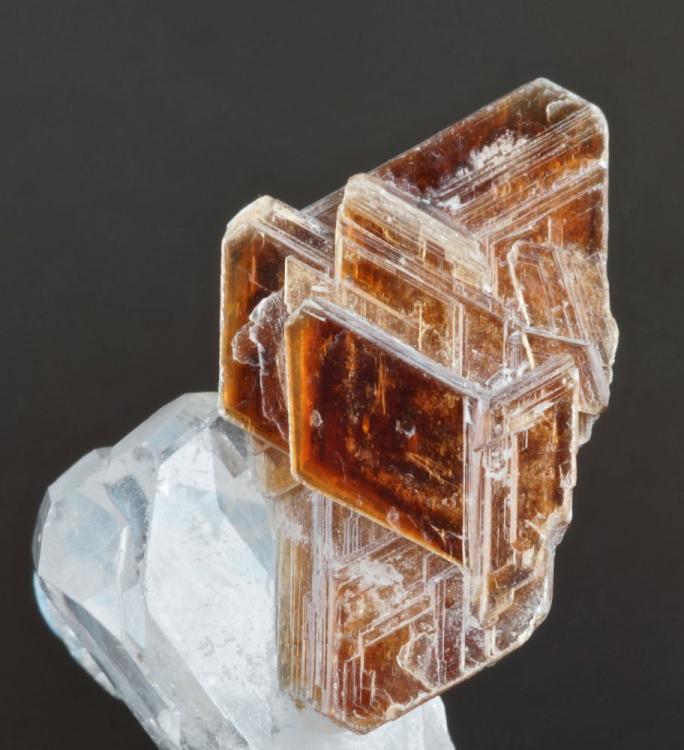
|
| Description: |
Muscovite on topaz
Shigar Valley, Pakistan
26 mm muscovite group on 26 mm topaz |
|
| Viewed: |
31390 Time(s) |
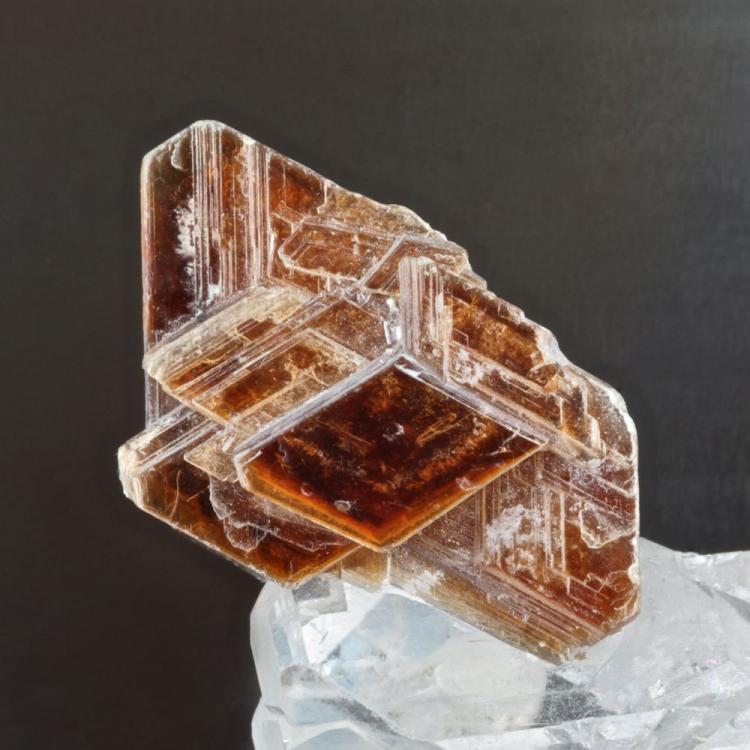
|
|
|
| Back to top |
|
 |
Ru Smith
Joined: 13 Oct 2012
Posts: 362



|
 Posted: Oct 20, 2012 16:48 Post subject: Re: Mica Twins Posted: Oct 20, 2012 16:48 Post subject: Re: Mica Twins |
|
|
and I think that this Burmese fuchsite shows twins in contact on the basal pinacoid (look at the side view).
| Description: |
green mica (fuchsite)
Oh Saung Taung, Le-Oo (Le U), W of Mogok, Burma
18 mm across, 12 mm tall |
|
| Viewed: |
31357 Time(s) |
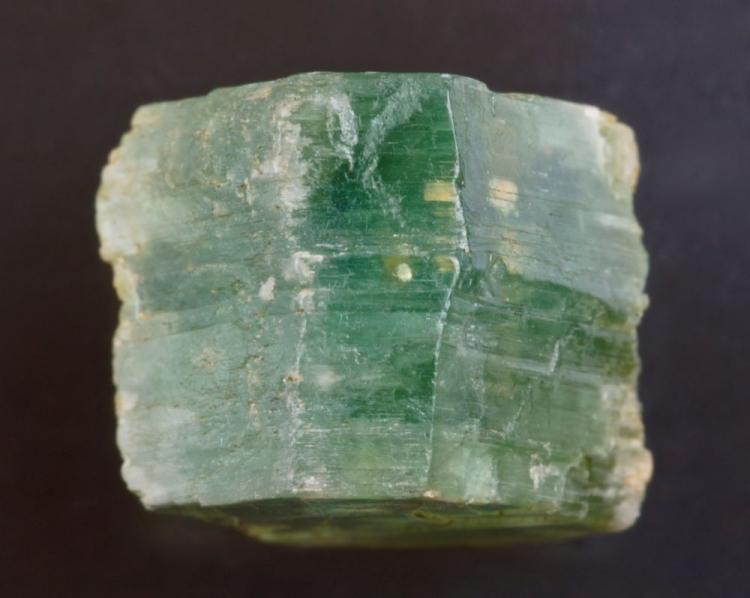
|
| Description: |
green mica (fuchsite)
Oh Saung Taung, Le-Oo (Le U), W of Mogok, Burma
18 mm across, 12 mm tall |
|
| Viewed: |
31464 Time(s) |
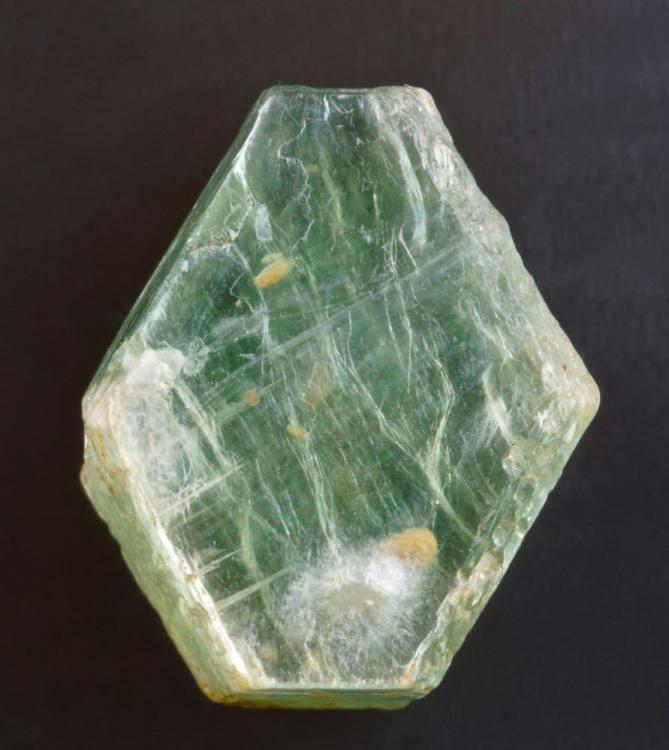
|
|
|
| Back to top |
|
 |
Ru Smith
Joined: 13 Oct 2012
Posts: 362



|
 Posted: Oct 20, 2012 18:45 Post subject: Re: Mica Twins Posted: Oct 20, 2012 18:45 Post subject: Re: Mica Twins |
|
|
Amazing how looking helps with seeing.
| Description: |
Muscovite
Sakangyi area, W of Mogok, Shan State, Burma
12 mm group on 57 mm matrix |
|
| Viewed: |
31336 Time(s) |
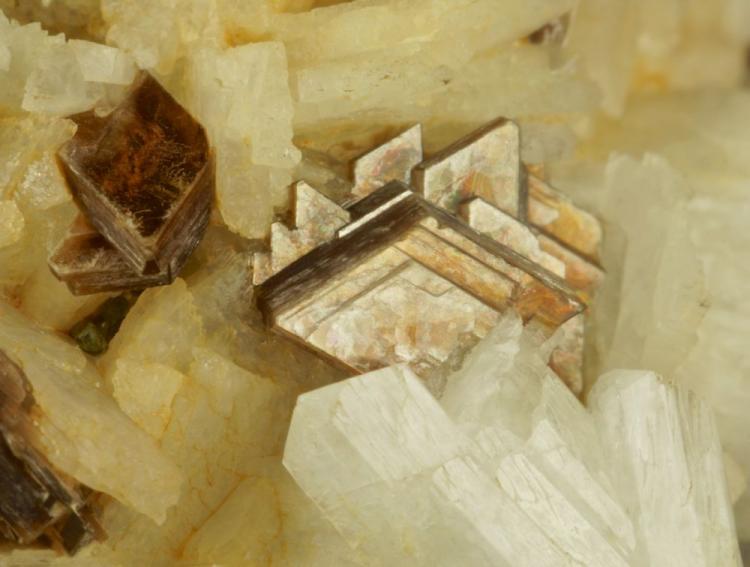
|
|
|
| Back to top |
|
 |
Luiz Menezes
Joined: 10 Dec 2009
Posts: 140
Location: Belo Horizonte


|
 Posted: Oct 21, 2012 09:17 Post subject: Re: Mica Twins Posted: Oct 21, 2012 09:17 Post subject: Re: Mica Twins |
|
|
| No, Ru, I have never seen mica twins like the ones you posted from New York
|
|
| Back to top |
|
 |
Ru Smith
Joined: 13 Oct 2012
Posts: 362



|
 Posted: Oct 21, 2012 10:53 Post subject: Re: Mica Twins Posted: Oct 21, 2012 10:53 Post subject: Re: Mica Twins |
|
|
Here's something I hadn't thought about. These mica twins can occur in "left" handed and "right" handed forms (since the crystals are elongated along the b axis in the rays of the star).
The attached drawings are from Hurlbut, C.S. 1956. MUSCOVITE FROM METHUEN TOWNSHIP, ONTARIO. American Mineralogist.
Hurlbut also notes that the twins are actually penetration twins rather than contact twins.
Your Brazilian stars Luiz are thin (at least in the example I have), but I'll take a look a bit later to see if their handedness can be made out.
| Description: |
|
| Viewed: |
31245 Time(s) |
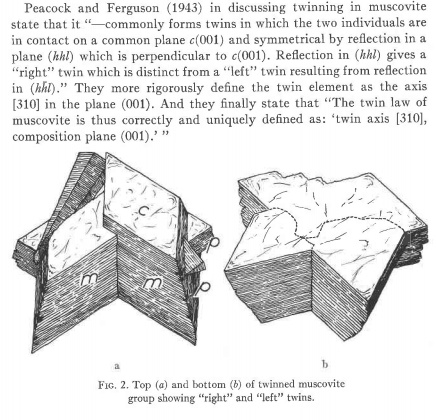
|
| Description: |
|
| Viewed: |
31278 Time(s) |
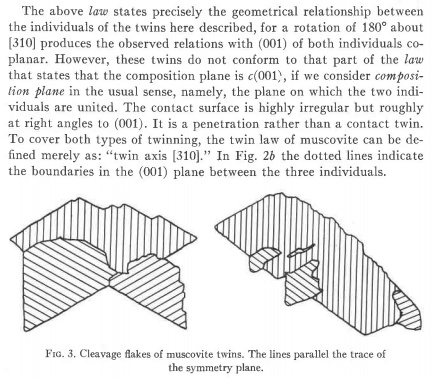
|
|
|
| Back to top |
|
 |
Ru Smith
Joined: 13 Oct 2012
Posts: 362



|
 Posted: Oct 21, 2012 11:09 Post subject: Re: Mica Twins Posted: Oct 21, 2012 11:09 Post subject: Re: Mica Twins |
|
|
| but this "right" and "left" twins naming is confusing because we're looking at reflections. I'm wrong to use the word "handedness".
|
|
| Back to top |
|
 |
Pete Richards
Site Admin
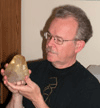
Joined: 29 Dec 2008
Posts: 828
Location: Northeast Ohio



|
 Posted: Oct 23, 2012 13:47 Post subject: Re: Mica Twins Posted: Oct 23, 2012 13:47 Post subject: Re: Mica Twins |
|
|
In a presentation at the 38th Rochester Mineral Symposium in 2011, Steve Chamberlain, Mike Walter, and I interpreted these New York phlogopites as penetration twins on [130] and [-130], with suppression of alternate limbs to give a three-rayed star rather than a six-rayed one. The limbs are elongated along the a-axis. Apparently this is different from the Brazilian stars, if they are indeed elongated along the b-axis.
I've never been completely satisfied with our interpretation, and have wondered instead if the three rays represent some sort of compromised growth akin to hoppered growth, with growth being favored along those three directions only.
It would be useful to look at a thin section under polarized light to determine whether the three rays have different orientations or the same one, but I only have one specimen and I'm not about to sacrifice it!
I don't think we understand these strange phlogopites very well yet.
I will see if I can get permission to post the abstract here. Or you can find it at
(2012): Contributed Papers in Specimen Mineralogy: 38th Rochster Mineralogical Symposium Abstracts: Part 2, Rocks & Minerals, 87:3, 279-283.
_________________
Collecting and studying crystals with interesting habits, twinning, and epitaxy |
|
| Back to top |
|
 |
Ru Smith
Joined: 13 Oct 2012
Posts: 362



|
 Posted: Oct 23, 2012 14:22 Post subject: Re: Mica Twins Posted: Oct 23, 2012 14:22 Post subject: Re: Mica Twins |
|
|
Brilliant. Thanks Pete!
The Brazil/Pakistan/Burma/Ontario star points are elongated parallel to b, resulting in the "lean towards" and "lean away" or "right" and "left" (as Hurlbut named them) pairs of points (on my Burmese example I can see these two patterns alternating as I rotate the twin). See also Hurlbut's drawing showing the trace of the symmetry plane in his three-element penetration twin.
If the elongation direction in the New York examples is parallel to a (as you state and as I had guessed at the top of the thread) then doesn't [110] do the job, giving us a reflection plane at 60 degrees to the "rays"?
I also have just the one example and do not intend to dissect it!
Thanks again
|
|
| Back to top |
|
 |
Pete Richards
Site Admin

Joined: 29 Dec 2008
Posts: 828
Location: Northeast Ohio



|
 Posted: Oct 23, 2012 15:45 Post subject: Re: Mica Twins Posted: Oct 23, 2012 15:45 Post subject: Re: Mica Twins |
|
|
| Ru Smith wrote: | If the elongation direction in the New York examples is parallel to a (as you state and as I had guessed at the top of the thread) then doesn't [110] do the job, giving us a reflection plane at 60 degrees to the "rays"?
|
Well, almost, and maybe. The attached diagram shows a penetration twin on [310]/[-310] and one on [110]/[-110], and stereographic projections of the two. The view is down onto the shared {001} face. They look the same at first glance, but the end faces point either slightly inward (and are therefore visible) or slightly outward (and are not seen). Note that with 310, the inward and outward faces alternate, whereas with 110 the innies are all at the top, and the outies are all at the bottom. So there is a difference, albeit small.
I think it makes more sense to assume that the three rays we actually have are of the same type - innies or outies - rather than a mixture. We'll never tell from the specimens - they're not that sharp.
I used [310] because that's the law that is in the literature. The plane (110) does not work because then the (001) faces are not parallel. I don't think I actually tried [110].
Good thinking, Ru!
| Description: |
| Hypothetical mica twins on [±310] and on [±110], revealing a subtle difference between the two twin laws. |
|
| Viewed: |
31125 Time(s) |
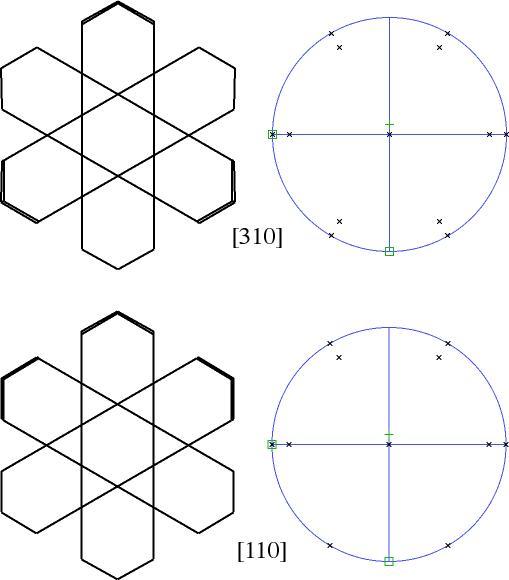
|
_________________
Collecting and studying crystals with interesting habits, twinning, and epitaxy |
|
| Back to top |
|
 |
Dean Allum

Joined: 27 Jan 2010
Posts: 17
Location: Colorado


|
 Posted: Oct 28, 2012 17:05 Post subject: Re: Mica Twins Posted: Oct 28, 2012 17:05 Post subject: Re: Mica Twins |
|
|
These "A-type" muscovite books are common in Fremont and Park county pegmatites in Colorado. Several local collectors think these are a type of twin, but now I am not sure. Notice that the A-shape is divided in the middle with striations branching towards the edges.
I separated a page from one of these books, but was unable to see any sort of optical boundary with polar-analyzed light.
Does anyone have an explanation for this A-type?
| Description: |
muscovite
Micanite district, colorado USA
5cm each
|
|
| Viewed: |
30932 Time(s) |
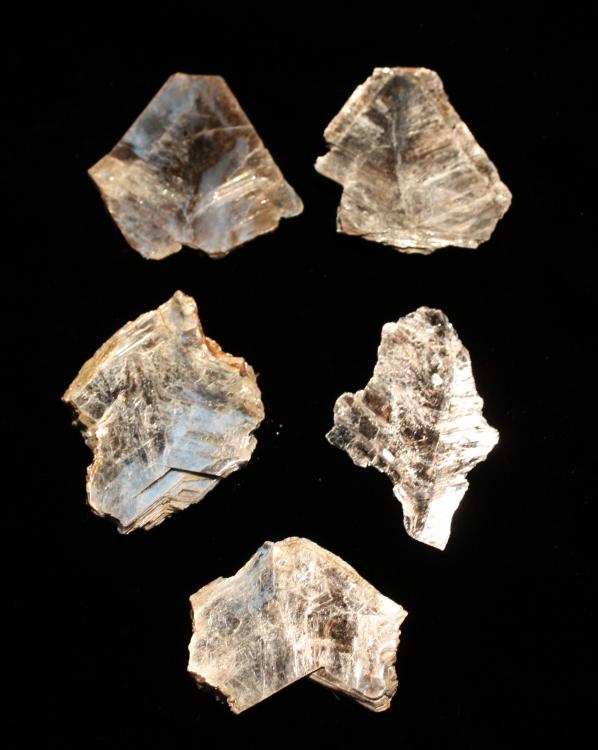
|
|
|
| Back to top |
|
 |
Ru Smith
Joined: 13 Oct 2012
Posts: 362



|
 Posted: Nov 03, 2012 16:08 Post subject: Re: Mica Twins Posted: Nov 03, 2012 16:08 Post subject: Re: Mica Twins |
|
|
| Dean Allum wrote: | These "A-type" muscovite books are common in Fremont and Park county pegmatites in Colorado. Several local collectors think these are a type of twin, but now I am not sure. Notice that the A-shape is divided in the middle with striations branching towards the edges.
I separated a page from one of these books, but was unable to see any sort of optical boundary with polar-analyzed light.
Does anyone have an explanation for this A-type? |
Hi. I think these are the traditional [310] twins, most clearly seen in your left centre and bottom photos. The Hurlbut drawings above show the form.
|
|
| Back to top |
|
 |
|


